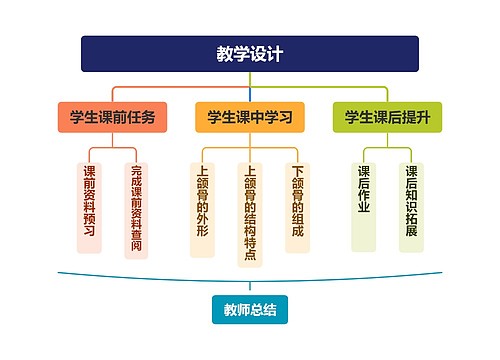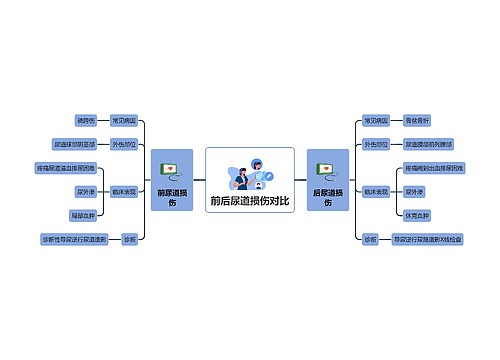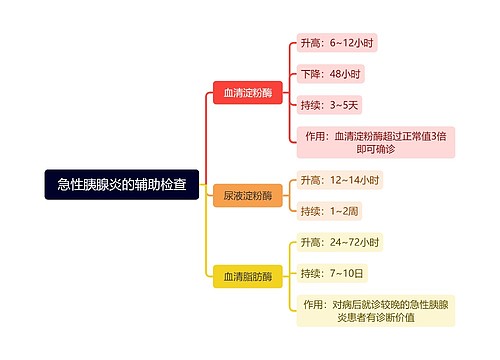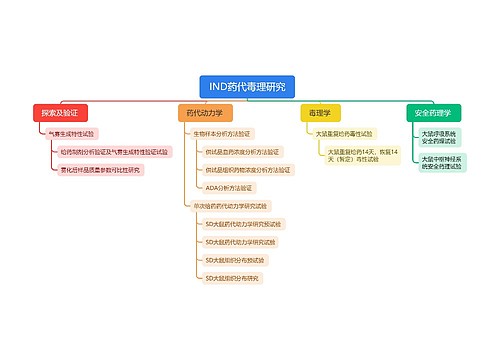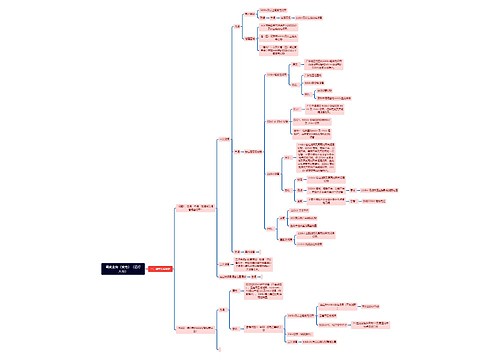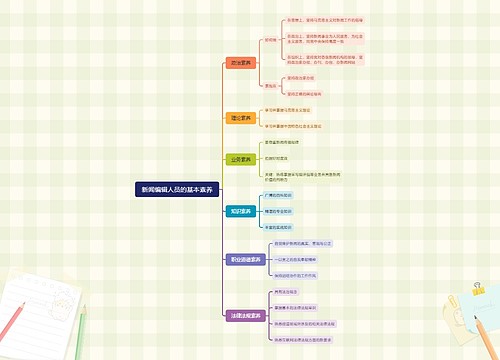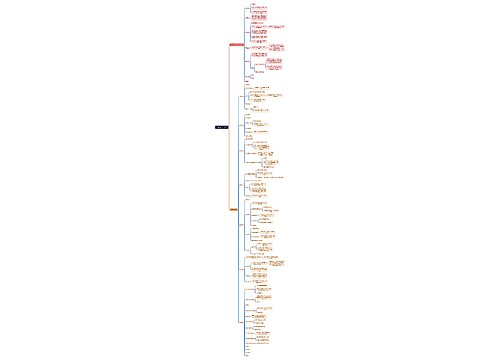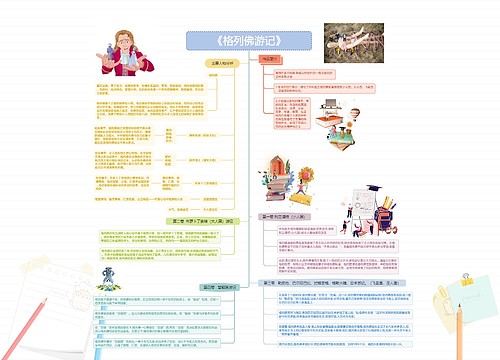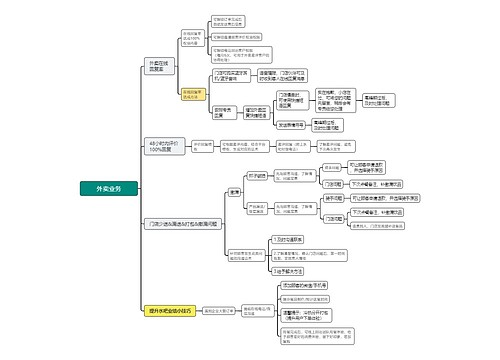
儿童发展阶段的划分及各年龄阶段的主要特征脑图思维导图
雅尹
2023-09-12

儿童成长
发展阶段
理论知识
儿童发展阶段的划分及各年龄阶段的主要特征
树图思维导图提供《儿童发展阶段的划分及各年龄阶段的主要特征脑图》在线思维导图免费制作,点击“编辑”按钮,可对《儿童发展阶段的划分及各年龄阶段的主要特征脑图》进行在线思维导图编辑,本思维导图属于思维导图模板主题,文件编号是:9cfc8750060705623c9897577a4f81e5
思维导图大纲
相关思维导图模版
Age-Related Changes in Tissue Value Properties in Children
儿童组织价值特性与年龄相关的变化思维导图模板大纲
Background & Objective
The properties of brain tissue undergo dynamic changes during maturation.
To date, the gradual changes of gray and white matter tissue contrast on conventional images, driven by changes in the longitudinal relaxation time (T1) and transverse relaxation time (T2), have been widely used to assess brain development.
However, these approaches are only qualitative; thus, their use for objectively assessing maturation degree is limited.
In contrast, quantitative MRI techniques such as relaxometry provide absolute numeric indices that can be used to define developmental trajectories and quantitatively monitor abnormal maturation or disease conditions.
T1 relaxation time (T1), T2 relaxation time (T2), and proton density(PD) are now simultaneously quantifiable within a clinically acceptable time
使用集合磁共振成像 (MRI) 序列在临床可接受的时间内同时量化 T1 弛豫时间 (T1)、T2 弛豫时间 (T2) 和质子密度 (PD)
Our study provides age-specific regional reference values, from the neonate to adolescent, of T1, T2, and PD, which could be objective tools for assessment of normal / abnormal brain development using synthetic MRI.
我们的研究提供了从新生儿到青少年的特定年龄区域的 T1、T2 和 PD 参考值,这可以作为使用集合 MRI 评估正常/异常大脑发育的客观工具
既往研究限制性
the investigated study cohort was mostly limited to newborns, and only a few studies have included the age range from birth to approximately 3 years with the most dynamic change
To our knowledge, no report has evaluated the age-dependent changes in T1, T2, and PD in the developing brain using synthetic imaging. Thus the age-specific absolute values for these in children have not yet been determined.
In many cases, despite the advantages of quantitative imaging, excessive acquisition time to achieve a sufficient signal-to-noise ratio and resolution has hampered its clinical use.
synthetic MRI that has emerged as a new technique enables the simultaneous quantification of all tissue parameters such as relaxation times, relaxation rate, and PD within a clinically acceptable time of 5 to 6 minutes for full head coverage at high resolution.
集合MRI作为一种新技术,能够在临床上可接受的5 - 6分钟内同时量化所有组织参数,如弛豫时间、弛豫速率和PD,以高分辨率覆盖整个头部
Materials and Methods
Materials
89 children (median age, 18 months; range, 34 weeks of gestational age to 17 years)
no abnormal MRI / neurologic assessment findings
no congenital anomalies, chromosomal abnormalities, or perinatal / prenatal injuries
no diagnosis of a major psychiatric, metabolic, or learning disorder
In total, 93 patients met the study inclusion criteria ( four showed severe motion artifacts and were excluded from the final analysis ).
male-to-female ratio,35:54
neonate, 23
Twenty-one preterm newborn infants of the 23 neonates were imaged at a gestational age of 34 to 43 weeks (mean ± SD,38.8 ± 2.3 weeks)
<12 months, 14
12–24 months, 14
25–36 months, 3
37–60 months, 7
>60 months, 28
quantitative MRI (3T)
multidynamic multiecho(MDME) sequence 多动态多回波序列
between December 2015 and November 2016
32-channel head coil
This synthetic MRI sequence is a multisection,multiecho, multisaturation delay method of saturation recovery acquisition that uses a fast spin-echo readout.
parameters
field-of-view(FOV): 180 × 180 to 240 × 240 mm
matrix: 320 × 224
section thickness / spacing: 4/1 mm
bandwidth: 81.37 Hz/pixel
echo-train length: 12
number of average: 1
acceleration factor: 2
The acquisition times of the synthetic MRI sequence were 6:08 to 6:20 minutes
The quantification maps (T1,T2,and PD map) were simultaneously generated from the raw data produced by the MDME sequence using the vendor-provided program (SyMRI 8.0; SyntheticMR,Linköping,Sweden).
Methods
Using radiology electronic medical records【retrospective】
T1, T2, and PD were simultaneously measured in each of the 22 defined white matter and gray matter regions of interest(ROI)
10 in the graymatter (cortex [anterior frontal, perirolandic, and posterior parietal]
deep gray matter [caudate nucleus, thalamus]) and 12 in the white matter (corpus callosum genu and splenium; optic radiation; periventricular [frontal and parietal]; subcortical [anteriorfrontal and posterior parietal]
FIGURE 1. The T1 map obtained from synthetic imaging in a preterm girl imaged at 38-week of gestational age. ROI measurements were obtained from the right and left hemispheres of the brain except the corpus callosum. Twenty-two ROIs were drawn at the following locations: periventricular and subcortical white matter, frontal and parietal cortex (A), perirolandic cortex (B), caudate nucleus,thalamus, corpus callosum genu (C), corpus callosum splenium (D), optic radiation (E).
the tissue values obtained from the left and right hemispheres of the brain were averaged to yield a value for each region of the brain
the means and standard deviations for T1, T2, and PD were calculated stratified by the following developmental periods
neonate (preterm neonates who were imaged at nearly termequivalent age to 1 month)
2–3 / 4-6 / 7-9 / 10-12 / 13-18 / 19-24 / 25-36 / 37-60 / >60months
The measured values were plotted against age, and a curve fitting model that best explained the age dependence of tissue values was identified.
Age-specific regional tissue values were calculated using a fit equation.
测量值相对于年龄绘制,并确定了最能解释组织值的年龄依赖性的曲线拟合模型。使用拟合方程计算特定年龄的区域组织值
monoexponential model 单指数模型
biexponential model 双指数模型
the modified biexponential equation is
To examine potential hemispheric and sex differences in development of regional tissue values, data for each hemisphere and sex were compared, using paired and unpaired t tests
19 tissue values for each cortical region were compared using paired t test
Investigation of Myelin Partial Volume Trajectories
By using the MDME pulse sequence, the myelin partial volume can be estimated from R1, R2, and PD. The total estimated myelin partial volume (Msum) and the ratio of Msum to the total brain parenchyma (Mbpv) were automatically calculated using SyMRI software.
Gompertz modeling was used to describe the myelination trajectory based on a previous study of age dependence of myelin partial volume using synthetic imaging in children.
Results
Age-Dependent Changes in Tissue Values
The tissue values of all brain regions, except cortical PD, decreased with increasing age, and the robust negative association was best explained by modified biexponential model of the form Tissue values =T1 × exp (−C1 × age) + T2 × exp (−C2 × age).
除皮质 PD 外,所有脑区的组织值均随着年龄的增长而下降,并且这种稳健的负相关性可以通过修改后的双指数模型得到最好的解释:组织值 =T1 exp (−C1 年龄) + T2 exp (− C2年龄)
cortex changed little during the maturation process
Regional differences in cortical tissue values were found to be significant
in deep gray matter and white matter, age was a good predictor of tissue values
In the cortex, age was also a relatively good predictor of tissue values, except for PD
The quality of fit to the modified biexponential model was high in white matter and deep gray matter (white matter, R2 = 97%–99% [T1], 88%–95% [T2], 88%–97% [PD]; deep gray matter, R2 = 96%–97% [T1], 96% [T2], 49%–88% [PD]; cortex,70%–83% [T1], 87%–90% [T2], 5%–27% [PD])
修改后的双指数模型的拟合质量在白质和深层灰质中较高(白质,R2 = 97%–99% [T1],88%–95% [T2],88%–97% [PD] ;深部灰质,R2 = 96%–97% [T1],96% [T2],49%–88% [PD];皮质,70%–83% [T1],87%–90% [T2] ,5%–27% [PD])
The white matter and deep gray matter changed the most dynamically within the first year of life.
白质和深灰质在生命的第一年内变化最为动态
T1 trajectories in each brain region for 89 subjects
T2 trajectories in each brain region for 89 subjects
PD trajectories in each brain region for 89 subjects
Significant left-right hemispheric differences in tissue value were observed in some regions
Age-Dependent Changes in Myelin Partial Volume
The myelination trajectories had a sigmoidal shape, with a lag period followed by rapid exponential growth over the first 2 years, and slower growth through 5 years of age.
髓鞘形成轨迹呈 S 形,有一段滞后期,随后在前 2 年呈指数级快速增长,并在 5 岁时增长缓慢
The Gompertz model
Discussion
methods
investigated age-dependent changes of regional tissue values (T1, T2, and PD) based on synthetic imaging acquired in 89 children ranging from preterm neonates to adolescents aged 17 years
In general, tissue values tend to decrease with increasing field strength and different techniques could lead to quite varying quantification results at equal field strengths. Therefore, the numerical values in our study cannot be directly compared with those of previous reports
results
the tissue values of all brain regions except cortical PD decreased with age, and the robust negative association was best explained by modified biexponential model
the T1 and T2 of white matter and deep gray matter measured in our study declined rapidly during the first year of life, followed by a slower reduction over the age of 2 to 3 years
The PD of these regions changed with age in a similar manner, although they decreased more slowly.
the constant C1 in the fit equation, representing the slope of curve during the rapid development period, were higher for the parietal than for the frontal white matter, and was also higher for the periventricular than for the subcortical white matter, indicating that the rapid maturation during the early development was faster in central than in peripheral and in posterior than in anterior
myelination is a main factor of reduction in tissue values in the white matter
many biochemical processes that occur during brain development can affect changes in tissue values in a complex manner; therefore, the relaxation properties and PD of tissues are innately nonspecific for evaluating brain maturation, although those can be used to determine normal and abnormal maturation
objectives
Normal adult brain tissues exhibit a relatively narrow range of tissue values, but developing brain tissues (especially those in neonates and young infants) have different values from those of adults, and values vary among brain regions. Therefore, we believe that it is important to determine age-specific regional reference tissue values in children.
Using the fit equation that was obtained through curve fitting, we could provide age-specific reference tissue values in each of the investigated white and gray matter regions as well as regional tissue value trajectories that exhibited anatomical growth differences.
the average tissue values for the cortex, deep gray matter, and white matter are expected to be useful for software optimization for the brain segmentation in children
Limitations
the reference tissue values provided in our study were derived from cross-sectional data; therefore, bias could have been introduced by variations between individuals during the maturation process
Although the overall observations in our study were quite robust, further longitudinal studies may be necessary to confirm our findings
this study had a relatively small sample size
The age range of greatest interest is birth to approximately 3 years because it shows dynamic changes in tissue values. Despite small sample size, 54 subjects including 23 neonates were in this age range
A further study with a larger population is required to generalize the clinical use of quantitative imaging using the synthetic sequence
the accuracy and reproducibility of synthetic sequence have been validated at 1.5 T, but not yet at 3 T
the coregistration and normalization steps before ROI analysis were not applied in our study, and tissue value analysis was performed based on manually selected ROIs
we analyzed age-related tissue value changes only at 3 T
the neonate group analyzed in our study included only uncomplicated preterm infants: no history of cardiorespiratory instability; were at low cerebral risk considering their clinical evolution, neurological assessment at term-equivalent age; and absence of cerebral lesions. However, the long-term neurodevelopmental outcomes for these patients were unavailable
查看更多
904名中国成年人第三磨牙相关知识、态度、行为和病史的横断面调查思维导图
 U633687664
U633687664树图思维导图提供《904名中国成年人第三磨牙相关知识、态度、行为和病史的横断面调查》在线思维导图免费制作,点击“编辑”按钮,可对《904名中国成年人第三磨牙相关知识、态度、行为和病史的横断面调查》进行在线思维导图编辑,本思维导图属于思维导图模板主题,文件编号是:10b9a8a2dd2fb4593f8130ef16c320fc
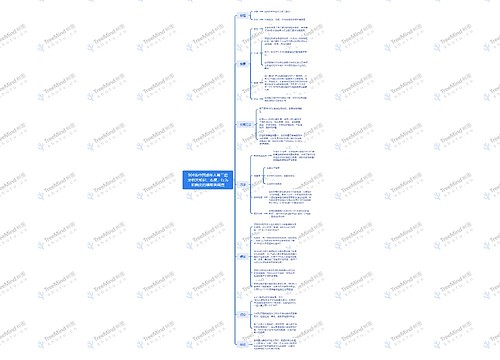
9.战斗的基督教思维导图
 U582679646
U582679646树图思维导图提供《9.战斗的基督教》在线思维导图免费制作,点击“编辑”按钮,可对《9.战斗的基督教》进行在线思维导图编辑,本思维导图属于思维导图模板主题,文件编号是:33d168acd0cd9f767f809c7a5df86e3a
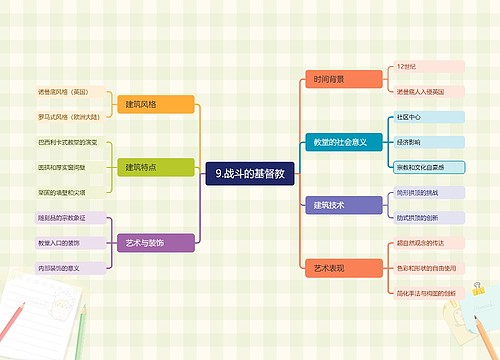
相似思维导图模版
首页
我的文件
我的团队
个人中心
